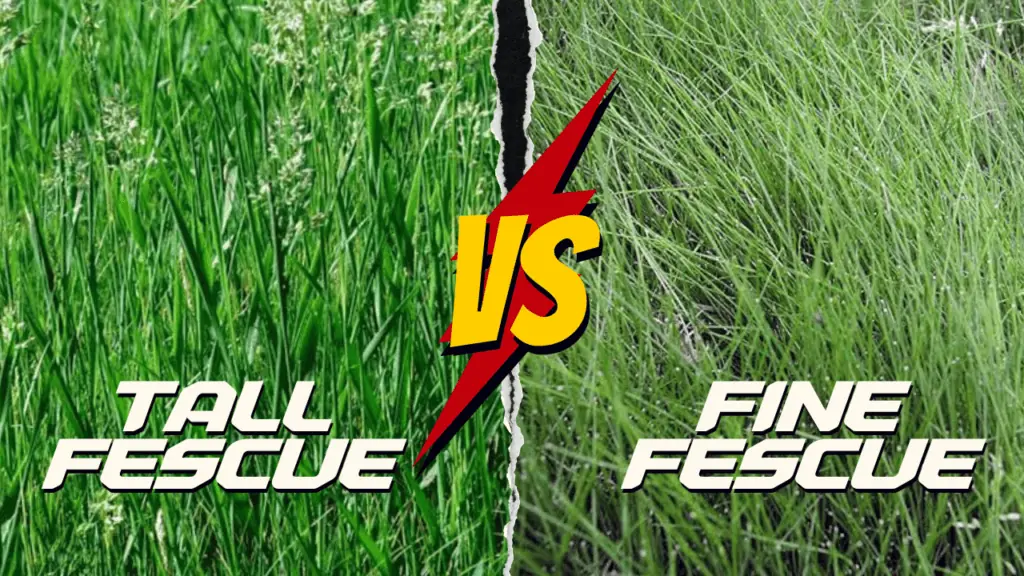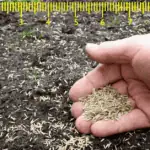Out of the over 300 fescue types, tall and fine fescues are among the most attractive and popular. These two types of grass are top lawn options and have similar and contrasting features. Therefore, it’s imperative that you carefully study each grass type to determine which one would be suitable for you.
This article will educate you on all you need to know about both fescue types. You’ll understand the characteristics of each type and which one would be the best for your application.
What is Tall Fescue?
Tall Fescue (Festuca arundinacea) is a type of grass native to Europe. It came to America in the 1800s and was adopted widely by the American population. Now, a massive percentage of the American population has tall fescue lawns.
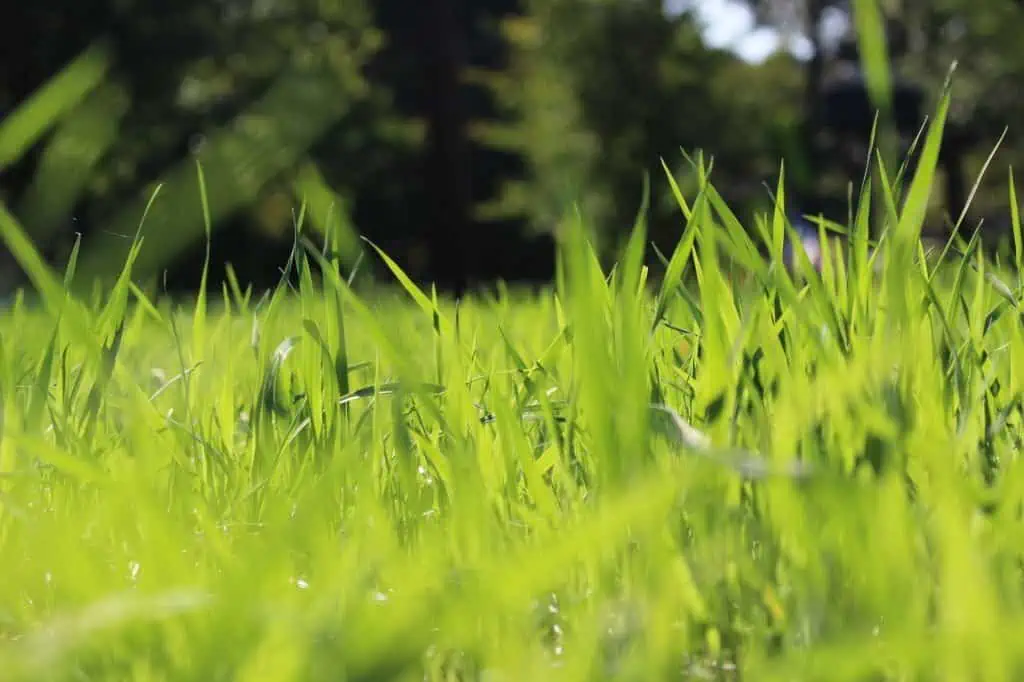
Tall fescue has a flat coarse-textured blade. You can know the grass by running your fingers through each side of the grass blades. It’s rough on one side and smooth on the other.
Tall fescue has a bunch-growth. The bunch growth feature lets it grows in clumps and spreads through tillers, which are vertical shoots that grow from the root. It also has a deep root system, which can reach 2 to 3 feet.
The grass has a strong drought tolerance. This reason is partly due to its deep root system mentioned in the last section. However, its adaptability rate to different conditions is high, and can withstand shade, heat, and cold.
The grass is more heat tolerant than cool-season grasses and has better cold tolerance than warm-season grasses, making them best suited to the transition areas of the US.
What is Fine Fescue?
Fine Fescue is also a cool-season grass type with narrow and spikier leaves. This grass type has a fine texture with a beautiful carpet-like appearance.
Fine fescues are known for their incredible shade tolerance. It also has a low traffic tolerance and doesn’t require much moisture or fertilizer. Fine fescue is also a drought-tolerant grass.

This drought tolerance, combined with low maintenance requirements, is among the reasons it’s one of the most popular grass types in the US. It can also blend well with other grass varieties, especially bluegrass and perennial ryegrass.
There are five fine fescue types; hard, chewings, strong creeping red, and sheep fescue, and all these grass types are similar. This section will explain briefly the types of fine fescues.
- Hard Fescue: Hard fescue thrives best in cold and dry climates and dislikes moist soil. It germinates well on low-fertility soil and has a grey-green color. This grass is soft on the touch and will give you that hairy feel rather than a rough, grassy one.
- Chewing Fescue: Chewing fescue thrives best in the colder areas of the Nothern US and Canada. Its main strength is its ability to germinate under shady conditions, in which it betters other fine fescue types. This grass will grow well under infertile soil or areas that are drought-prone.
- Hard Fescue: Hard fescue is a drought and heat-tolerant grass that can thrive in infertile soil. Its grass is usually dark green-colored and has moderate shade tolerance.
- Sheep Fescue: Sheep fescue stands out for its low mow requirement. You should get the grass type for your home if you won’t be able to do much mowing on it regularly.
- Slender Creeping Red Fescue: Slender creeping red fescue is famous for its usage in golf courses due to its decent mowing requirements. It has very fine needly like leaves like other fine fescue types and has a less aggressive growth.
Now you know what tall and fine fescues are, the subsequent sections will put both grasses side by side to determine how they perform.
Tall Fescue vs. Fine Fescue: Mowing
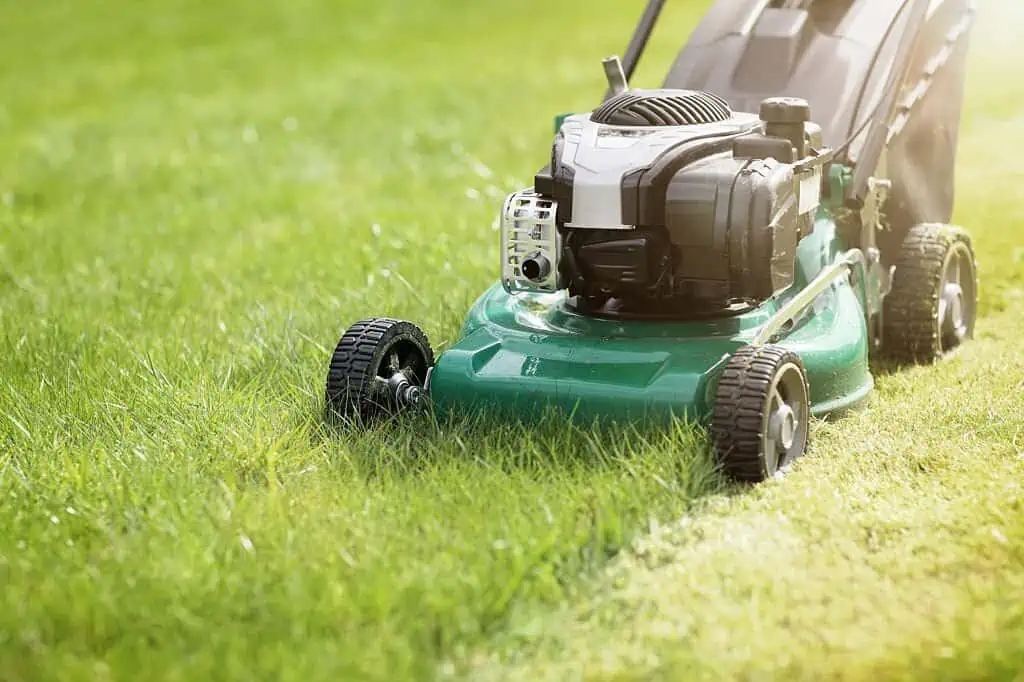
You should keep both tall and fine fescues around 1.5 to 2 inches. However, you can mow both at around 3-4 inches in the dry and hot periods. If you purchase the correct tall fescue and maintain it well, you can go for long periods for a beautiful no-mow look.
It’s imperative to understand that you should use a good lawn mower with sharp blades when mowing both types of grass. Sharp blades will cut the grasses better without exposing them to infection. For the best result, use a riding mower but be careful of the ones with gigantic tires, especially when mowing fine fescues.
Mow your tall fescue lawn weekly from March to April and once every 14 days from June through August. Cut the grasses once weekly from September to November, and you can rest up in the December to February period.
Soil Type
Tall fescue grows best in rich clay soil that compacts easily. It thrives on a soil PH of around 5.5 to 7.5. The grass type will survive harsh or alkaline conditions, which fine fescue won’t be able to do.
On the other hand, fine fescue needs soil that is sandy, poor, and well-aerated to germinate well. It’s best to plant it on soil with a PH of around 6 to 6.5, but it can also grow on soil with a neutral PH. Fine fescue will grow on any field, whether flat or sloped, but tall fescue needs flat land to germinate to the best of its abilities.
Common Diseases
Tall fescues are fine fescues that can all get infected with webworms, ants, and thrips. However, tall fescue is more disease resistant. It’s best resistant to infections if it’s growing in wet conditions.
On the other hand, fine fescues don’t perform well in that aspect if you plant in wet conditions. It can develop fungal infections if you cultivate it in moist areas. You should carefully check your grasses for early signs of diseases so that you can treat them early.
Weighing the Costs
Tall and fine fescues have similar seed prices per pound. Fine fescue sells for around $3-$8, while tall fescue costs $3-$7. The price depends on the quality of the seed and whether you want to buy it coated or not.
If you have space larger than 1,000 square feet, you’ll spend more on tall fescue seeds than fine fescue. You need at least five pounds of tall fescue to cover 1,000 square feet and 3 pounds for fine fescue. Coated seeds are more expensive because of the coating material.
Understand that both grass types would cost much higher if you want to buy them in sods, cuttings, or plug. You won’t need to go for any of those options because tall and fine fescues grow well under the right conditions.
Fine vs. Tall Fescue: Fertilizer
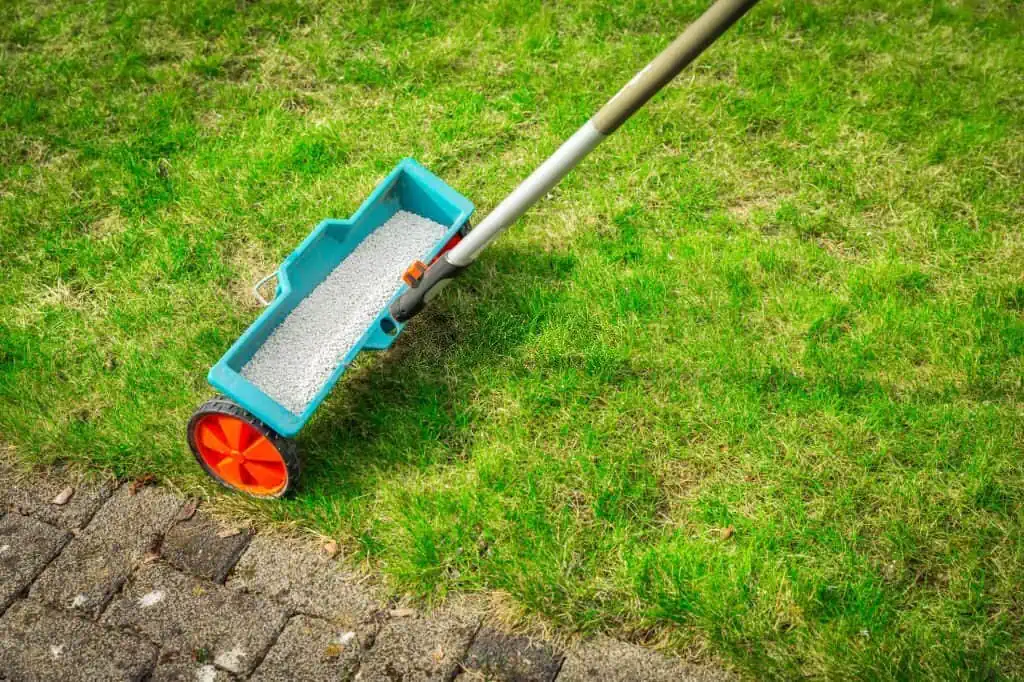
March to May and September to November is the best period to fertilize your tall fescue grasses. Early March is when you should begin fertilizing the grass. Tall fescues would need around one pound of Nitrogen per one thousand square feet.
If you have a bigger space, find the total land area, convert it into feet, and divide it by 1,000 to the amount of sufficient fertilizer. Tall fescues don’t need fertilization from June to August and December through February.
Like tall fescue, March to May and September to November are the only appropriate times to fertilize fine fescue grasses. September to November is the best time when they need around 0.5 to 1.0 pounds of Nitrogen based fertilizer per 1000 square feet.
Tall fescues may also need fertilization in the spring at the same rate as their fall application. Here only apply it in mid-April or early May. Don’t over-fertilize your lawns to avoid excessive growth.
Watering Requirements
Fine fescue grasses don’t need water during spring as the temperature and moisture are perfect for germination. However, you might need to water them if you plant them newly. Additionally, you’ll need to water the seeds if the leaves give an unnatural dark or bluish tint.
The period of June through August is when your lawn would need the highest amount of water. You should give it around one inch of water weekly, but you might need to give it more if it’s on sandy soil. Fine fescue barely needs water from September to February unless it’s newly seeded.
Tall fescue has a similar watering requirement to fine fescue lawns. You don’t need to water it from March to May unless you’re just seeding them. Summertime is when you’ll need to water the grasses frequently unless you want them to go dormant. Dormant tall fescues would need water once every three weeks.
Tall fescues need one inch of water during this period to germinate properly. It will also need more water if you grow it on sandy soil. Tall fescues would need periodic watering, from October-February, during the dry, windy weather.
Which Grass Should You Buy?
The one you should plant depends on your preferences and yard requirements. You should opt for tall fescues if you live in the Nothern areas of the country, as the conditions are best for germination. Fine fescues would grow better in the colder regions of the country,
Tall fescues have a better foot tolerance than fine fescues. If you have an area where kids would step on the ground often, fine fescues wouldn’t be a wise choice.
As for growth and maintenance, both lawns have similar requirements, from watering to fertilizing and maintenance. However, you should opt for fine fescues if you don’t fancy mowing your yard very often.
Conclusion
There’s all you may need to know about tall and fine fescues. Both lawn kinds of grass are top lawn options, and the type you should buy is up to you, your locality, and yard conditions. Tall fescues perform better under light conditions, while fine fescues are better optimized for shady yards.
If you like both grass types equally and find it difficult to choose, you can combine both. Both of them perform well together if you care well for them. Even if you don’t mix them, taking care of your grasses is the key to healthy growth.
